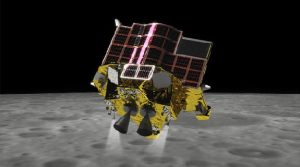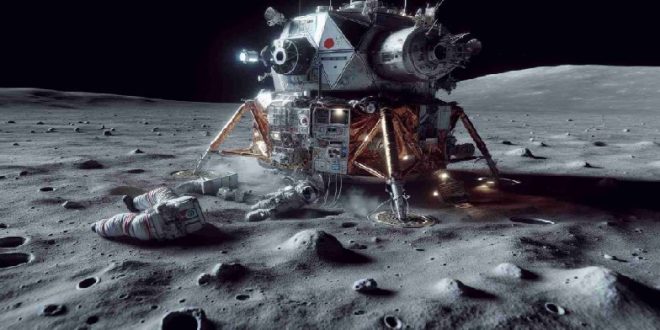21-01-2024
TOKYO: A Japanese robot has successfully touched down on the Moon but problems with its solar power system mean the mission may live for just a few hours.
 The Smart Lander for Investigating Moon (Slim) put itself gently on the lunar surface near an equatorial crater.
The Smart Lander for Investigating Moon (Slim) put itself gently on the lunar surface near an equatorial crater.
The feat made the Asian nation only the fifth country to soft-land on Earth’s natural satellite, after the US, the Soviet Union, China and India.
Engineers are now battling to save the mission, however.
For reasons not yet fully understood, the craft’s solar cells will not generate electricity.
This leaves Slim totally reliant on its batteries and these will eventually discharge. When they do, the craft will go silent. It won’t receive commands and it won’t be able to talk to Earth.
Engineers are currently prioritizing activities.
They’ve turned off heaters and are pulling down pictures from the craft. They’re also retrieving data that will tell them how well the landing software worked.
Japanese space agency (Jaxa) officials will not immediately give up on Slim if it does fall silent. It’s always possible the solar cells have somehow become oriented in a way that prevents them from seeing the Sun.
 As light angles change on the Moon, it was possible Slim could come back to life, the officials said.
As light angles change on the Moon, it was possible Slim could come back to life, the officials said.
Asked at a news conference whether Japan could justifiably claim a soft landing, Jaxa vice president, Hitoshi Kuninaka, said it could.
“If powered descent wasn’t successful, then there would have been a collision with the surface at a very high speed and spacecraft function would have been completely lost,” he told reporters but “it is still sending data properly to us, which means our original objective of a soft landing was successful.”
Slim was carrying two small rovers and telemetry indicates it managed to eject these as planned just before touchdown.
The craft, which carries an infrared camera, was to spend the next fortnight studying the local geology. How much of this investigation can be achieved in the time available is uncertain.
Statistically, it’s proven very hard to land on the Moon. Only about a half of all attempts have succeeded.
Jaxa put its faith in new precision-navigation technologies.
The lander’s onboard computer used rapid image processing and crater mapping to avoid hazards to reach its touchdown point. (Int’l News Desk)
 Pressmediaofindia
Pressmediaofindia




